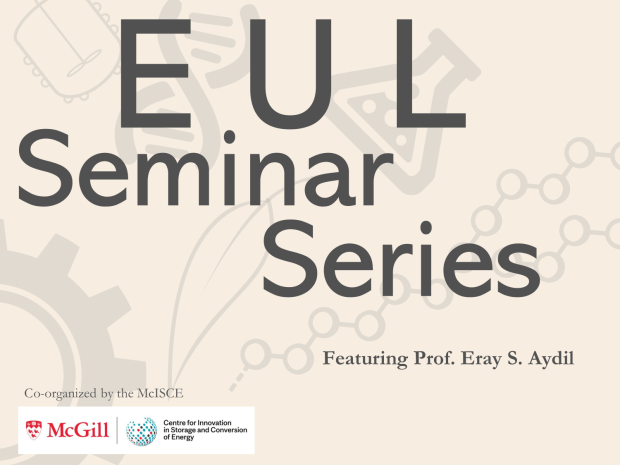EUL Seminar Series: Surpassing Solar Cell Efficiency Limits via Quantum Cutting

Join McGill University as they host Tandon's very own Eray Aydil for a lecture discussion on his research regarding Surpassing Solar Cell Efficiency Limits via Quantum Cutting. This is a virtual event only with no RSVP required.
Speaker:
Eray S. Aydil
Department of Chemical and Biomolecular Engineering, New York University Tandon School of Engineering
Abstract:
Redshifting the solar spectrum received by a solar cell with an overlayer that creates two near-infrared (NIR) photons from each ultraviolet (UV) and blue photon via quantum cutting can increase their power conversion efficiencies above the Quessier limit (~33%) while reducing their degradation by UV and heating and thus improving their service lifetimes. Both efficiency and lifetime improvements are needed in viable technological paths to 2 ¢/kWh, the United States Department of Energy's Levelized Cost of Electricity (LCOE) goal for silicon modules for 2030. Yb-doped CsPb(Cl1-xBrx)3 has emerged as a potential material for this application because the Yb3+ emission at 1.24 eV is close to the bandgap of silicon and photoluminescence quantum yields (PLQY) approaching 200% (2 NIR photons per UV photon) has been demonstrated in colloidal dispersions, and thin films synthesized using solution-based approaches. These films, however, exhibit significant sub-bandgap absorption. We use physical vapor deposition (PVD) as an alternative for depositing films with high PLQY and low sub-bandgap absorption. We explore the PVD of thin Yb-doped CsPb(Cl1-xBrx)3 (x<0.65) and Yb-doped lead-free double perovskite films (e.g., Cs2AgBX6 with B = Bi, In, Sb and X=Cl, Br) from metal halide precursors. The latter is motivated by replacing Pb and contrasting CsPb(Cl1-xBrx)3 with a material where Pb is heterosubstituted to form a double perovskite. Reproducible and stable PLQY as high as 95% are achieved with Cs2AgBiBr6 films doped with 8% Yb. This high PLQY indicates facile and efficient energy transfer from the perovskite host, Cs2AgBiBr6, to Yb, making Cs2AgBiBr6 the most promising lead-free downconversion material to date.


